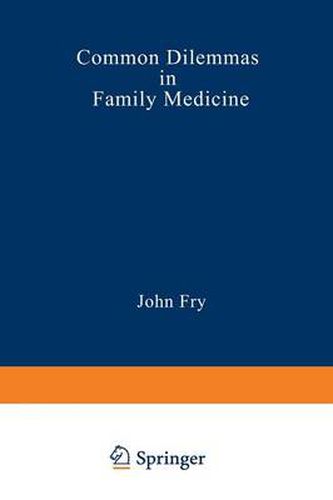Readings Newsletter
Become a Readings Member to make your shopping experience even easier.
Sign in or sign up for free!
You’re not far away from qualifying for FREE standard shipping within Australia
You’ve qualified for FREE standard shipping within Australia
The cart is loading…






This title is printed to order. This book may have been self-published. If so, we cannot guarantee the quality of the content. In the main most books will have gone through the editing process however some may not. We therefore suggest that you be aware of this before ordering this book. If in doubt check either the author or publisher’s details as we are unable to accept any returns unless they are faulty. Please contact us if you have any questions.
One of the eXCltmg challenges of medicine has been the reaching of decisions based on less than complete evidence. As undergraduates in teaching hospitals future physicians are taught to think in clear and absolute black and white terms. Diagnoses in teaching hospitals all are based on supportive positive findings of in vestigations. Treatment follows logically on precise diagnosis. When patients die the causes of death are confirmed at autopsy. How very different is real life in clinical practice, and particularly in family medicine. By the very nature of the common conditions that present diagnoses tend to be imprecise and based on clinical assessment and interpretation. Much of the management and treatment of patients is based on opinions of individual physicians based on their personal expenences. Because of the relative professional isolation offamily physicians within their own practices, not unexpectedly divergent views and opinions are formed. There is nothing wrong in such divergencies because there are no clear absolute black and white decisions. General family practice functions in grey areas of medicine where it is possible and quite correct to hold polarized distinct opinions. The essence of good care must be eternal flexibility and readiness to change long-held cherished opinions. To demonstrate that with many issues in family medicine it is possible to have more than one view I selected 10 clinical and II non -clinical topics and invited colleagues and fellow-practitioners to enter into a debate-in-print.
$9.00 standard shipping within Australia
FREE standard shipping within Australia for orders over $100.00
Express & International shipping calculated at checkout
This title is printed to order. This book may have been self-published. If so, we cannot guarantee the quality of the content. In the main most books will have gone through the editing process however some may not. We therefore suggest that you be aware of this before ordering this book. If in doubt check either the author or publisher’s details as we are unable to accept any returns unless they are faulty. Please contact us if you have any questions.
One of the eXCltmg challenges of medicine has been the reaching of decisions based on less than complete evidence. As undergraduates in teaching hospitals future physicians are taught to think in clear and absolute black and white terms. Diagnoses in teaching hospitals all are based on supportive positive findings of in vestigations. Treatment follows logically on precise diagnosis. When patients die the causes of death are confirmed at autopsy. How very different is real life in clinical practice, and particularly in family medicine. By the very nature of the common conditions that present diagnoses tend to be imprecise and based on clinical assessment and interpretation. Much of the management and treatment of patients is based on opinions of individual physicians based on their personal expenences. Because of the relative professional isolation offamily physicians within their own practices, not unexpectedly divergent views and opinions are formed. There is nothing wrong in such divergencies because there are no clear absolute black and white decisions. General family practice functions in grey areas of medicine where it is possible and quite correct to hold polarized distinct opinions. The essence of good care must be eternal flexibility and readiness to change long-held cherished opinions. To demonstrate that with many issues in family medicine it is possible to have more than one view I selected 10 clinical and II non -clinical topics and invited colleagues and fellow-practitioners to enter into a debate-in-print.